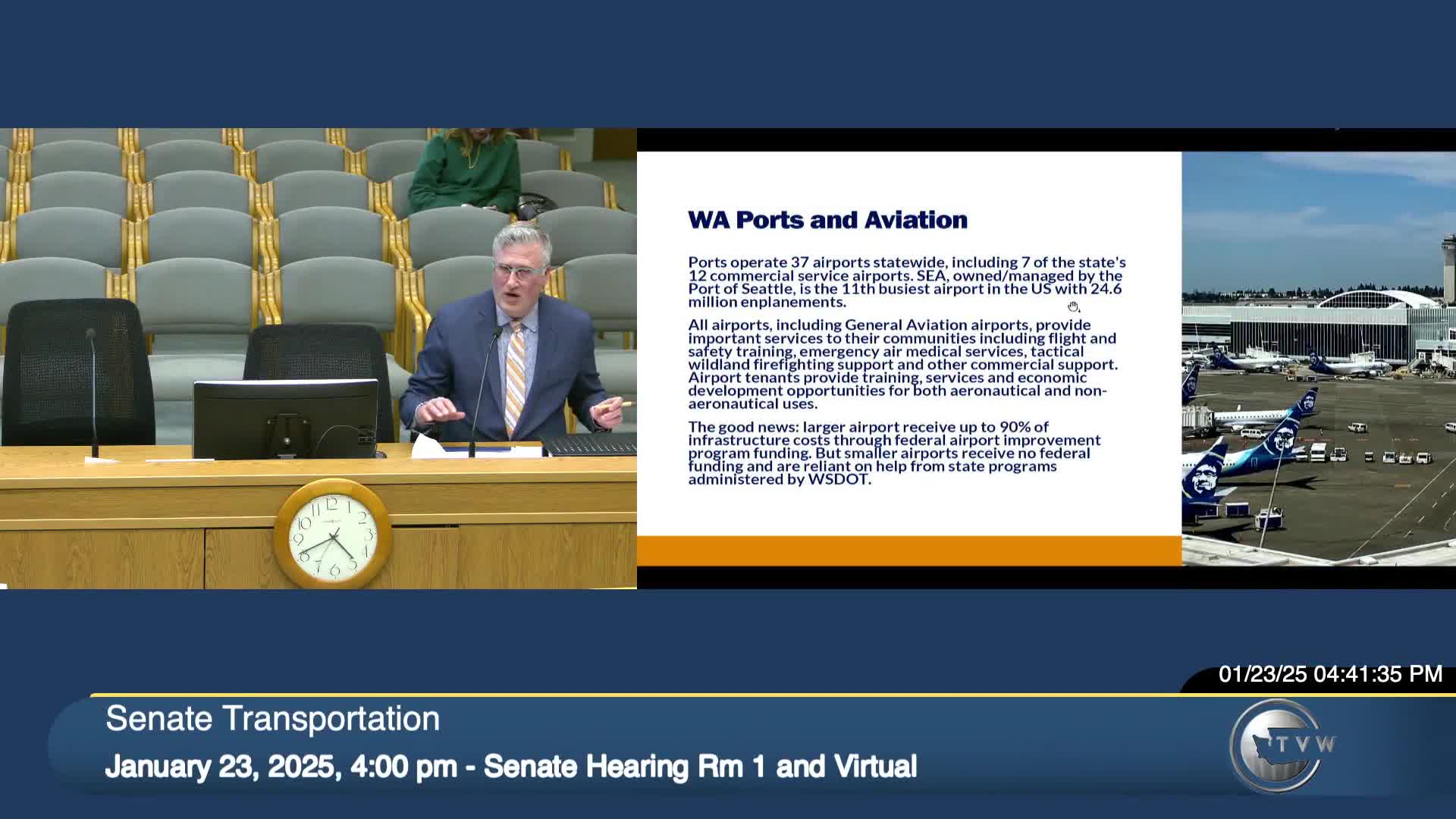Seattle-Tacoma International Airport embarks on $10 billion upgrade and sustainability plan
January 23, 2025 | Transportation, Senate, Legislative Sessions, Washington
This article was created by AI summarizing key points discussed. AI makes mistakes, so for full details and context, please refer to the video of the full meeting. Please report any errors so we can fix them. Report an error »

During a recent Senate Transportation meeting, significant discussions centered around the state’s airports and their vital role in local communities. The meeting highlighted the diverse needs of both small general aviation (GA) airports and larger commercial hubs, particularly Seattle-Tacoma International Airport (SEA).
Senators noted that Washington state is home to 37 airports, including 12 commercial service airports. The differences in needs between the smallest airport in Mansfield and the bustling SEA were emphasized, showcasing the range of services provided by these facilities. Smaller airports not only support local businesses but also host training programs for aviation and emergency services, making them essential to their communities.
Funding for these airports varies greatly. While larger airports like SEA benefit from substantial federal support—about 90% of airside investments come from the Federal Aviation Administration—smaller airports rely heavily on limited state grant programs to maintain operations.
A major focus of the meeting was SEA's ongoing $5 billion capital investment plan, dubbed "Upgrade SEA." This initiative aims to enhance traveler experiences through significant facility improvements. Concurrently, SEA is undergoing an environmental review for an additional $5 billion project known as the Sustainable Airport Master Plan (SAMP). This plan includes the construction of a new terminal with 19 gates and addresses roadway access issues to alleviate congestion.
The SAMP is currently in the National Environmental Policy Act (NEPA) review phase, with completion expected by the end of the second quarter of this year. Following this, the State Environmental Policy Act (SEPA) process will commence, further ensuring that the airport's expansion aligns with community needs and environmental standards.
These developments at SEA and the support for smaller airports underscore the state's commitment to enhancing transportation infrastructure, which is crucial for economic growth and community connectivity. As these projects progress, residents can anticipate improved travel experiences and increased accessibility across Washington's aviation landscape.
Senators noted that Washington state is home to 37 airports, including 12 commercial service airports. The differences in needs between the smallest airport in Mansfield and the bustling SEA were emphasized, showcasing the range of services provided by these facilities. Smaller airports not only support local businesses but also host training programs for aviation and emergency services, making them essential to their communities.
Funding for these airports varies greatly. While larger airports like SEA benefit from substantial federal support—about 90% of airside investments come from the Federal Aviation Administration—smaller airports rely heavily on limited state grant programs to maintain operations.
A major focus of the meeting was SEA's ongoing $5 billion capital investment plan, dubbed "Upgrade SEA." This initiative aims to enhance traveler experiences through significant facility improvements. Concurrently, SEA is undergoing an environmental review for an additional $5 billion project known as the Sustainable Airport Master Plan (SAMP). This plan includes the construction of a new terminal with 19 gates and addresses roadway access issues to alleviate congestion.
The SAMP is currently in the National Environmental Policy Act (NEPA) review phase, with completion expected by the end of the second quarter of this year. Following this, the State Environmental Policy Act (SEPA) process will commence, further ensuring that the airport's expansion aligns with community needs and environmental standards.
These developments at SEA and the support for smaller airports underscore the state's commitment to enhancing transportation infrastructure, which is crucial for economic growth and community connectivity. As these projects progress, residents can anticipate improved travel experiences and increased accessibility across Washington's aviation landscape.
View full meeting
This article is based on a recent meeting—watch the full video and explore the complete transcript for deeper insights into the discussion.
View full meeting
